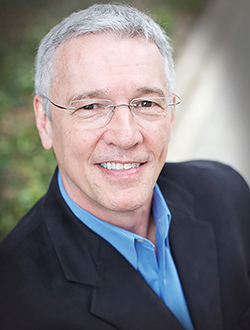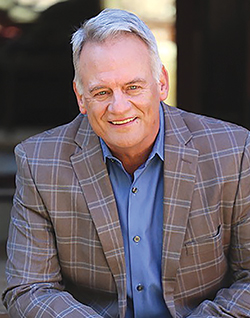
For a long time, the model for creating a culture of generosity in the church involved the occasional pledge card, an annual sermon or two on stewardship, a letter to the congregants asking for gifts, maybe a year-end appeal around the holidays to close a gap, and a year-end giving statement.
Today, that approach falls short of creating a vibrant culture of giving in our congregations.

Senior Vice President & Partner
Horizons Stewardship
As our society evolves technologically, we live in an age where content — even faith-based content like sermons — is often consumed at our convenience with streaming or on-demand viewing. You no longer have to watch a broadcast at a specific time to enjoy it. Essentially, we have evolved from “broadcast mentality” to “on-demand culture.”
So, what does “broadcast mentality” versus streaming have to do with the culture of giving in your church? More importantly, how can you use this information to improve the generosity culture?
To answer those questions, Church Executive partnered with Joel Mikell, senior vice president and partner at Horizons Stewardship, and Doug Turner, president at Culture of Ready, to host a webinar: “The One. The Few. The Many.” In it, Mikell and Turner use the metaphor of “broadcast mentality” and an analogy of navigating rivers and mountains to explain a more effective layered strategy: appealing to “The One,” “The Few” and “The Many” to enhance the giving experience for congregants and strengthen the generosity culture of the church.
This approach allows you to find a generosity balance that is less about numbers and budgets and more about ministry and people. It also allows you to make the giving culture more consistent with the givers’ preference, even with varied preferences among your congregants.
“When you do a presentation in a worship service and make an ask for people to give to something, [high-capacity givers] just heard you ask everyone else. They didn’t hear you ask them. They need a conversational forum for that to happen.” — Doug Turner

President
Culture of Ready
The One
This term refers to the small percentage of individuals in every church who process giving in a highly relational, one-on-one setting. This typically includes the people in your church who have a unique financial capacity to give more than others.
Mikell and Turner explained that the key to strategies for appealing to these givers is conversation and discipleship.
“For someone who has a lot of money and a lot of possessions, the illusion in their life is they are defined by their wealth,” Turner said. “The Apostle Paul tells Timothy to challenge those who are ‘rich in this world’ to be generous, so they can discover true life. Life isn’t defined by our stuff, but by knowing the joy of following Christ. Challenging high-capacity givers to be generous reminds them of their true identity. Investment in your vision is a targeted discipleship approach for those ‘rich in this world.’”
The Few
This is the core group of your church — those who tend to live out their faith in community and small groups. They are regular givers; Turner described them as “the 20 percent already giving 80 percent of the money and 80 percent of the time.”
To help The Few grow in the grace of giving, Turner and Mikell recommend occasionally bringing this group together in a smaller setting to thank them for their leadership and investment in the ministries of the church and share with them, first, what’s coming next.
“Bring that group together and say, ‘You’re the first to hear this because you are our leaders, and we would not be where we are — doing what we’re doing — without all of you! Thank you!”
“You will also want to ask them what excites them about the future vision, as well as what concerns they might have,” Mikell said. “This group loves to feel they had an opportunity to express their ideas and perspectives.”
Both agreed that creating a sense of collaboration for this core group is the key to engaging The Few.
“This is the audience that owns the ministry with you because they’re vested in the work, and collaborating with them only increases and enhances ministry ownership for them,” Turner said.
“Involvement leads to a sense of ownership, and then that sense of ownership leads to a commitment to invest in it.” — Joel Mikell
The Many
This category refers to the wider group of all congregants who don’t fall under The One or The Few. They might give sporadically or spontaneously from time to time, but often pastors don’t capture the momentum when they do that, so they don’t become regular, systematic givers.
What makes this audience stand out is that their giving preference tends to be the opposite of The One. They want a large group space for giving that almost gives it a feeling of anonymity.
“This audience would never want the one-on-one conversation that you have with The One,” Turner said. “This audience needs an atmosphere of anonymity so they can hide a little bit as they process.”
In the webinar, Turner and Mikell explain how storytelling in “offering talks” shows The Many how their gifts make an impact and expresses gratitude, which encourages congregants to live out of that spirit of gratitude and give again. By showing The Many their impact and offering multiple giving options, you can engage them to take steps into the generosity journey.
By using this layered approach to appeal to the three main groups of your congregants, you can strengthen the culture of giving and help your church grow from these gifts.
Questions? Readers ask, experts answer.
Our senior pastor is considering bringing on a stewardship pastor. How do they determine who takes the lead on managing the relationship with the financial leaders?
Turner: When you bring in someone who’s a generosity person — a stewardship staff member — oftentimes they’re staying in touch, communicating gratitude and building relationships. But there usually is a point in time where the senior pastor has to be connected in a deep relationship. It can’t just be that you’ve given this over to a staff member; the staff member does some cultivating, builds that bridge, maybe connects the congregants to the senior pastor and answers questions. This position finds ways to say “thank you.” But ultimately, the pastor can’t separate or divorce him or herself from that.
Mikell: The most common approach is for the pastor of stewardship to lead the way by determining — with the senior pastor — who should be in The One category by doing the initial due diligence and research. Then, typically, the pastor of stewardship should make the initial contact and determine the appropriate time to engage the senior pastor. The pastor of stewardship should always be looking for who should be added to this group.
It’s always a case-by-case decision, though. A handoff is the common path to take, but there might be certain relationships where the pastor of stewardship is the primary carrier and nurturer of the relationship, and there might not be a handoff to the senior pastor.
Mikell: A church where I worked a couple years ago followed that exact model. They didn’t call that person a stewardship pastor, but that was the role and the job description. This person did the research and cultivated the relationships. They put together a portfolio on each individual being cultivated, and at the proper time in the engagement process, brought the senior pastor into the relationship.
Do you find churches that make stewardship and generosity a part of their discipleship path still do the traditional pledge campaign for the year ahead?
Mikell: I do still see churches that make stewardship and generosity as an integral part of their discipleship path still doing “pledge” cards. I am, however, seeing the word “pledge” less often and the phrase “intent to give” as its replacement.
For those churches that still do “cards” of some type, part of the value is having some idea of what to expect in the coming year with respect to their ability to forecast cash flow. And, it can give people a sense of commitment with a desire to follow through. When I put my name on anything, it changes how I think and feel about that thing.
Turner: With pledging, the one thing you have to be careful about is the unintended consequence that giving could be viewed as a household chore. Ultimately, we need to move giving to a place beyond that. You’ve got to make sure your communication is not just, ‘We’re doing this to build a budget,’ but, ‘We’re doing this for ministry that changes lives, for mutual accountability and to grow people in the grace of giving.’
You recommended that we download a specific document for trends in stewardship and giving. What was the name of that document?
Mikell: The report is called Giving USA 2018: The Annual report on Philanthropy for the Year 2017. You can find it at https://givingusa.org.
“The One. The Few. The Many.”
If you’re using a “one-size-fits-all” approach to generosity, your church might be suffering the consequences. Learn a more layered approach in this informative webinar.
Available now at
www.churchexecutive.com/webinars
Your approach to generosity seems to rely on a great deal of information about an individual’s giving. Is this an invasion of privacy, and have there ever been negative reactions to this information-gathering?
Mikell: That is correct: this approach does rely on a great deal of information-gathering. But, it goes beyond the giving piece by looking at engagement, passion and leadership.
When donor research is used, it pulls from public records and doesn’t invade anyone’s privacy.
I can’t guarantee there won’t be a negative reaction on the part of some, but the upside far outweighs the downside.
How do you facilitate meetings with The Few? Should these be appreciation meetings?
Mikell: As I alluded to earlier, the overarching objectives for these gatherings are to affirm and thank this group for their leadership and investment in the church; to celebrate some ministry and financial highlights of the current year; and to make them aware of the vision you believe God is calling the church to live out in the coming quarter or year.
In addition to gaining insightful feedback from this group, you want to let them know you would like to pull them back together every six months for updates and feedback. A possible agenda could include the following questions: What ministries would you like our church to do if money was no object? What are you most excited (and concerned) about for the future of our church?
This is also a time to consider sharing a life story from someone at the meeting. At the end of the meeting, you want this group to feel informed, inspired, and involved!
— Reporting by Skylar Griego


